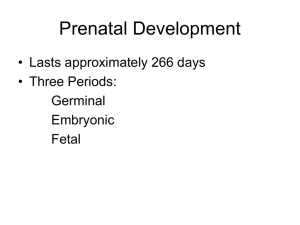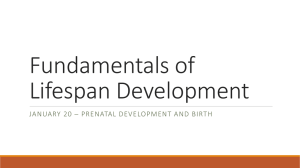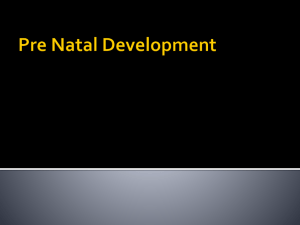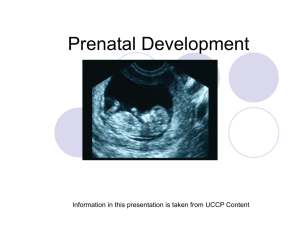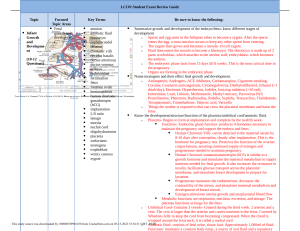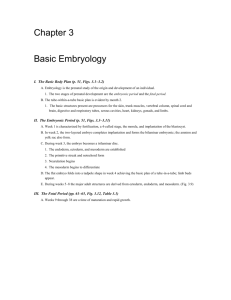Embryonic Development Lab: Anatomy & Physiology
advertisement
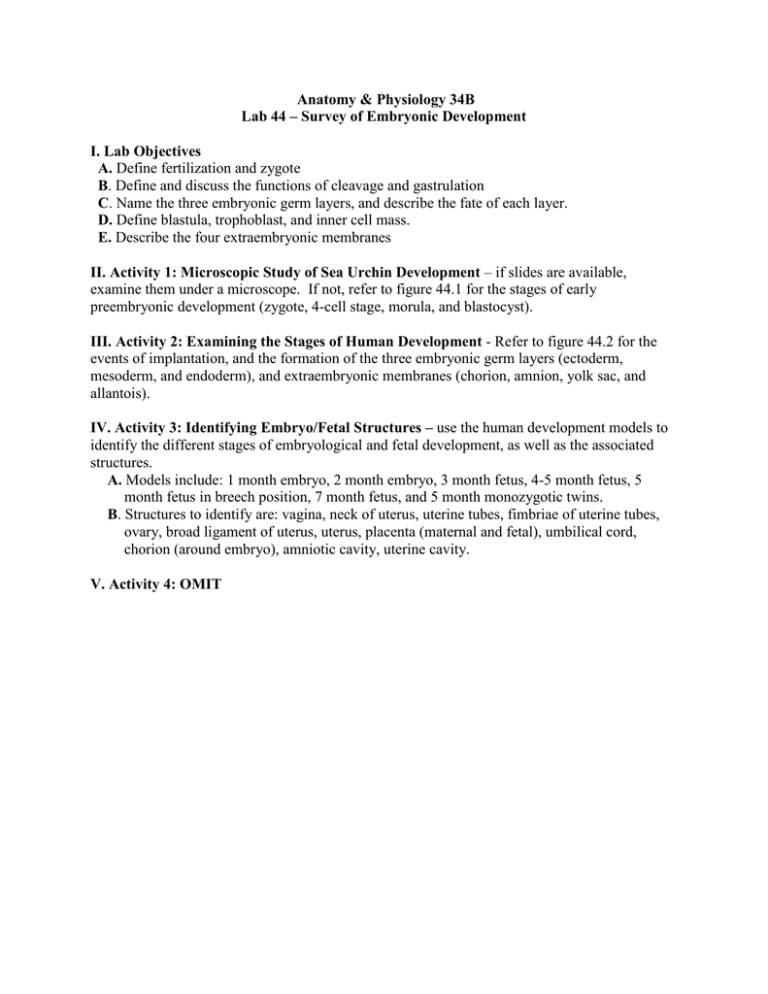
Anatomy & Physiology 34B Lab 44 – Survey of Embryonic Development I. Lab Objectives A. Define fertilization and zygote B. Define and discuss the functions of cleavage and gastrulation C. Name the three embryonic germ layers, and describe the fate of each layer. D. Define blastula, trophoblast, and inner cell mass. E. Describe the four extraembryonic membranes II. Activity 1: Microscopic Study of Sea Urchin Development – if slides are available, examine them under a microscope. If not, refer to figure 44.1 for the stages of early preembryonic development (zygote, 4-cell stage, morula, and blastocyst). III. Activity 2: Examining the Stages of Human Development - Refer to figure 44.2 for the events of implantation, and the formation of the three embryonic germ layers (ectoderm, mesoderm, and endoderm), and extraembryonic membranes (chorion, amnion, yolk sac, and allantois). IV. Activity 3: Identifying Embryo/Fetal Structures – use the human development models to identify the different stages of embryological and fetal development, as well as the associated structures. A. Models include: 1 month embryo, 2 month embryo, 3 month fetus, 4-5 month fetus, 5 month fetus in breech position, 7 month fetus, and 5 month monozygotic twins. B. Structures to identify are: vagina, neck of uterus, uterine tubes, fimbriae of uterine tubes, ovary, broad ligament of uterus, uterus, placenta (maternal and fetal), umbilical cord, chorion (around embryo), amniotic cavity, uterine cavity. V. Activity 4: OMIT
